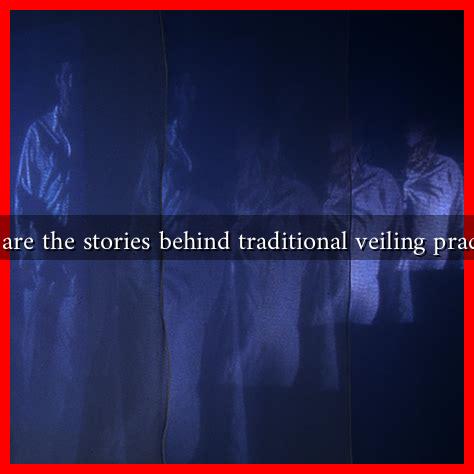-
Table of Contents
What are the Stories Behind Traditional Veiling Practices?
Veiling practices have been a significant aspect of various cultures and religions throughout history. From the hijab in Islamic cultures to the mantilla in Spain, veils serve multiple purposes, including religious observance, cultural identity, and personal expression. This article delves into the stories behind traditional veiling practices, exploring their historical roots, cultural significance, and contemporary interpretations.
The Historical Roots of Veiling
Veiling has ancient origins, with evidence of its practice found in various civilizations. The reasons for veiling have evolved over time, influenced by social, political, and religious factors. Here are some key historical points:
- Ancient Civilizations: In ancient Mesopotamia, women wore veils as a sign of modesty and social status. The practice was also prevalent in ancient Greece and Rome, where veils symbolized a woman’s virtue.
- Religious Texts: In many religious traditions, veiling is rooted in sacred texts. For instance, the Quran mentions the concept of modesty, which has led to the adoption of the hijab among Muslim women.
- Colonial Influence: During the colonial era, Western powers often imposed their values on colonized nations, leading to a complex relationship with veiling practices. In some cases, veiling was seen as a symbol of oppression, while in others, it became a form of resistance against colonial rule.
Cultural Significance of Veiling
Veiling practices are deeply intertwined with cultural identity. They often serve as a means of expressing one’s heritage and beliefs. Here are some examples of how veiling is perceived across different cultures:
- Islamic Cultures: In many Islamic societies, the hijab is not just a piece of clothing but a representation of faith and commitment to Islamic principles. Women may choose to wear it as an act of devotion.
- Western Cultures: In some Western contexts, veiling can be seen as a fashion statement or a form of personal expression. For example, the use of headscarves in fashion shows has sparked discussions about cultural appropriation and respect.
- Indigenous Practices: Various indigenous cultures have their own veiling traditions, often linked to rituals and ceremonies. For instance, the use of veils in Native American cultures can signify a woman’s transition into adulthood.
Contemporary Interpretations and Debates
In recent years, veiling practices have become a focal point of debate, particularly in the context of women’s rights and freedom of expression. The following points highlight some contemporary issues surrounding veiling:
- Feminism and Autonomy: Many women advocate for the right to choose whether to wear a veil, arguing that it should be a personal decision rather than a societal obligation. Feminist movements in various countries have embraced this perspective.
- Legislation and Bans: Some countries have enacted laws banning certain types of veils, citing security concerns or secularism. For example, France’s ban on the burqa has sparked significant controversy and discussions about religious freedom.
- Globalization: The rise of social media has allowed women to share their veiling experiences, creating a platform for dialogue and understanding. Hashtags like #HijabDay promote awareness and acceptance of diverse veiling practices.
Case Studies: Veiling in Different Contexts
To better understand the complexities of veiling practices, it is essential to examine specific case studies:
- Iran: Following the 1979 Islamic Revolution, the hijab became mandatory for women in Iran. This law has led to widespread protests and discussions about women’s rights and personal freedom.
- Turkey: In Turkey, the ban on headscarves in public institutions was lifted in 2013, reflecting a shift towards greater religious freedom. This change has sparked debates about secularism and religious expression.
- Western Countries: In countries like Canada and the United States, the presence of Muslim women wearing hijabs has prompted discussions about multiculturalism and acceptance in increasingly diverse societies.
Conclusion
Veiling practices are rich with history and cultural significance, serving as a lens through which we can explore issues of identity, autonomy, and societal norms. As the world becomes more interconnected, understanding the stories behind these practices is crucial for fostering dialogue and respect among diverse cultures. Whether viewed as a symbol of oppression or empowerment, veiling remains a powerful expression of personal and cultural identity. The ongoing debates surrounding veiling practices highlight the importance of choice and the need for respectful discourse in an increasingly globalized world.
For further reading on the topic, you can explore resources such as BBC News and Al Jazeera.

